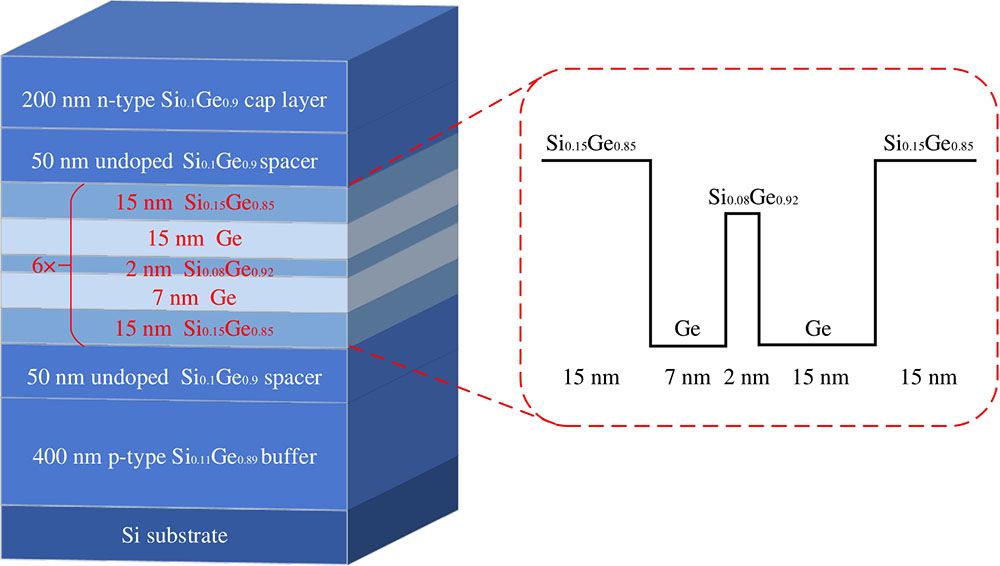Peilin JIANG, Yi ZHANG, Qiang HUANG, Haotian SHI, Chukun HUANG, Linfeng YU, Junqiang SUN, Changliang YU. Simulation for intensity modulation of asymmetric Ge/SiGe coupled quantum wells[J]. Chinese Journal of Quantum Electronics, 2024, 41(2): 388
Search by keywords or author
- Chinese Journal of Quantum Electronics
- Vol. 41, Issue 2, 388 (2024)

Fig. 1. Epitaxy design of the CQWs structure and schematic of the asymmetric Ge/SiGe CQW

Fig. 2. Wave functions at
Fig. 3. Energy dispersion near
Fig. 4. Transition energy at
Fig. 5. Absorption spectrum of the asymmetric Ge/SiGe CQW under different electric fields for (a) TE and (b) TM polarization
Fig. 6. Absorption spectrum of the Ge/SiGe uncouple quantum wells under different electric fields for (a) TE and (b) TM polarization
|

Set citation alerts for the article
Please enter your email address



